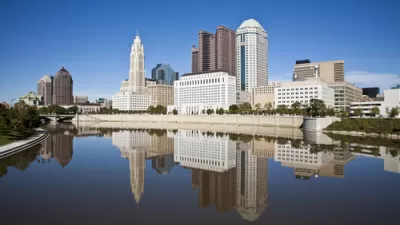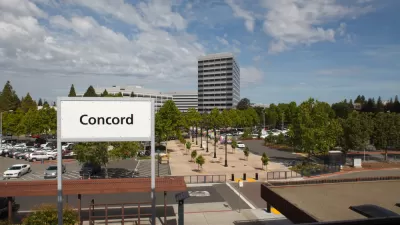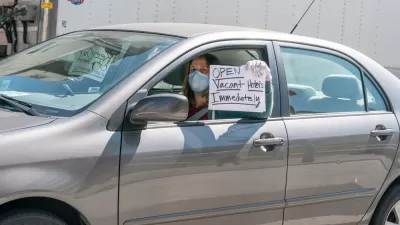As cities across America continue to pour public funds into limited use venues in their downtowns, American Dirt looks at why such venues, and convention centers in particular, refuse to engage with their surrounding streets or neighborhood.
With a focus on the Greater Columbus Convention Center, originally designed by Peter Eisenmann in 1993 and expanded six
years later, American Dirt probes why the designs for "big ticket items" such as arenas, stadia, and performance halls continue to ignore their context at a time when "street-level engagement for large projects in
city centers should, by this point, seem like a foregone conclusion."
While acknowledging the economic development benefits such facilities can bring, the author is alarmed by "an escalating tendency to
push these hulks right into the heart of the city, with practically no other
street-level storefronts, offices, or visual stimuli."
"Nothing this article explores is novel within the world of
urban design," notes the author, "but it warrants extra consideration because, even as many cities
are catching on to strong street-level engagement with other publicly funded
ventures, they continue to get convention centers wrong."
"Civic leaders across the country learned
a lesson from the relative isolation of Chicago's McCormick Place, but it's the
wrong lesson. Rather than taking a
cue that its isolated position estranged it from the hotels and the attractions
of downtown Chicago, other cities have imitated its hulking architecture while
displacing the buildings that originally helped a central business district
become a locus of all kinds of activity."
FULL STORY: Enticing visitors downtown…and then incarcerating them.

Alabama: Trump Terminates Settlements for Black Communities Harmed By Raw Sewage
Trump deemed the landmark civil rights agreement “illegal DEI and environmental justice policy.”

Planetizen Federal Action Tracker
A weekly monitor of how Trump’s orders and actions are impacting planners and planning in America.

The 120 Year Old Tiny Home Villages That Sheltered San Francisco’s Earthquake Refugees
More than a century ago, San Francisco mobilized to house thousands of residents displaced by the 1906 earthquake. Could their strategy offer a model for the present?

Indy Neighborhood Group Builds Temporary Multi-Use Path
Community members, aided in part by funding from the city, repurposed a vehicle lane to create a protected bike and pedestrian path for the summer season.

Congestion Pricing Drops Holland Tunnel Delays by 65 Percent
New York City’s contentious tolling program has yielded improved traffic and roughly $100 million in revenue for the MTA.

In Both Crashes and Crime, Public Transportation is Far Safer than Driving
Contrary to popular assumptions, public transportation has far lower crash and crime rates than automobile travel. For safer communities, improve and encourage transit travel.
Urban Design for Planners 1: Software Tools
This six-course series explores essential urban design concepts using open source software and equips planners with the tools they need to participate fully in the urban design process.
Planning for Universal Design
Learn the tools for implementing Universal Design in planning regulations.
Clanton & Associates, Inc.
Jessamine County Fiscal Court
Institute for Housing and Urban Development Studies (IHS)
City of Grandview
Harvard GSD Executive Education
Toledo-Lucas County Plan Commissions
Salt Lake City
NYU Wagner Graduate School of Public Service





























